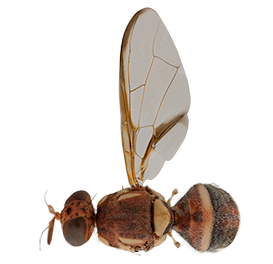Diagnosis
Morphological – adult
Medium sized species. Features include:
- medium sized black facial spots present
- postpronotal lobes and notopleura yellow
- scutum red-brown with fuscous markings, mesopleural stripe reaching midway between anterior margin of notopleuron and anterior npl. seta, lateral postsutural vittae present, medial postsutural vitta absent, scutellum yellow
- wing with a narrow fuscous costal band and broad fuscous anal streak, cells bc and c fuscous, microtrichia covering cell c and outer ½ of cell bc
- abdominal terga III-V generally red-brown with a medial and two broad lateral longitudinal fuscous bands over all three terga and joined along anterior margin of tergum III
- paler forms of the abdomen are often present
- posterior lobe of male surstylus short
- female with apex of aculeus needle shaped (Drew 1989; pers. comm. Drew 2010).
Morphological – larvae
See White and Elson-Harris 1992 p. 231
Molecular
PCR-RFLP Test 1
BsrI: 200, 600
HinfI: 770
HhaI: 640, 190
Sau3AI: 420
SnaBI: Does not cut
SspI: 180, 570
Vspl: Does not cut
Approximate ITS1 fragment length – gel: 820 bp.
PCR-RFLP Test 2
SspI produces a B. tryoni species complex diagnostic restriction pattern.
SspI: 1000, 550, 100 bp.
This species cannot be distinguished from B. aquilonis or B. neohumeralis.
Other restriction patterns useful for diagnosis of the complex are listed in Restriction enzyme haplotype chart, with choice based on relative distinctiveness from other species potentially trapped. Descriptions of the patterns are given in Diagnostic restriction patterns.
Gallery
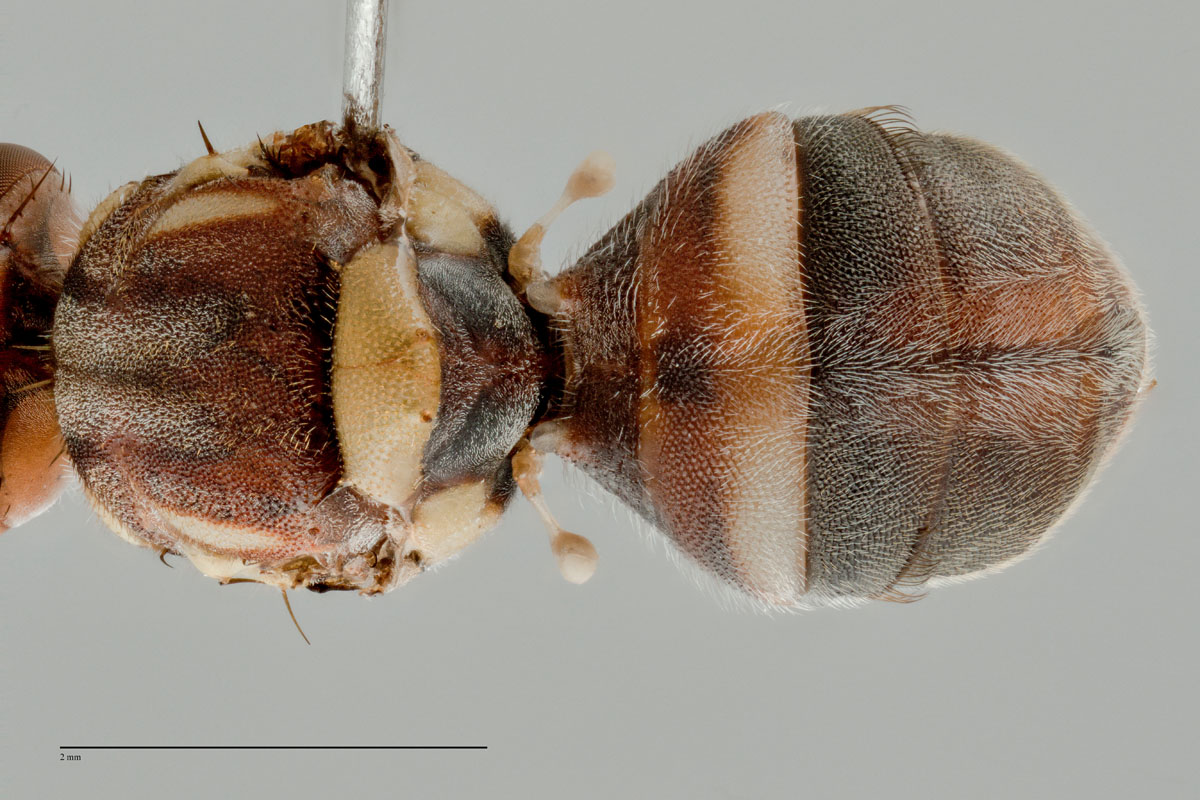 link
link Bactrocera tryoni - Dorsal Abdomen Classic TRY004
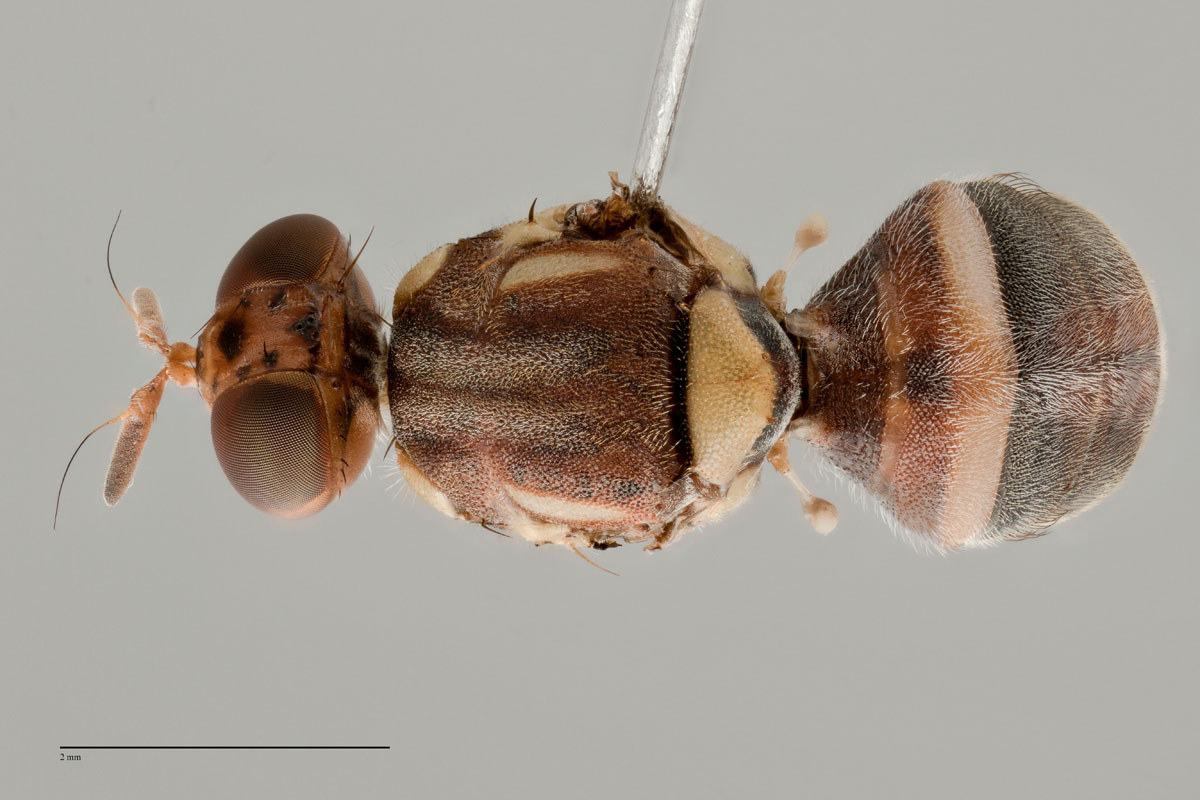 link
link Bactrocera tryoni - Dorsal Entire Body Classic TRY004
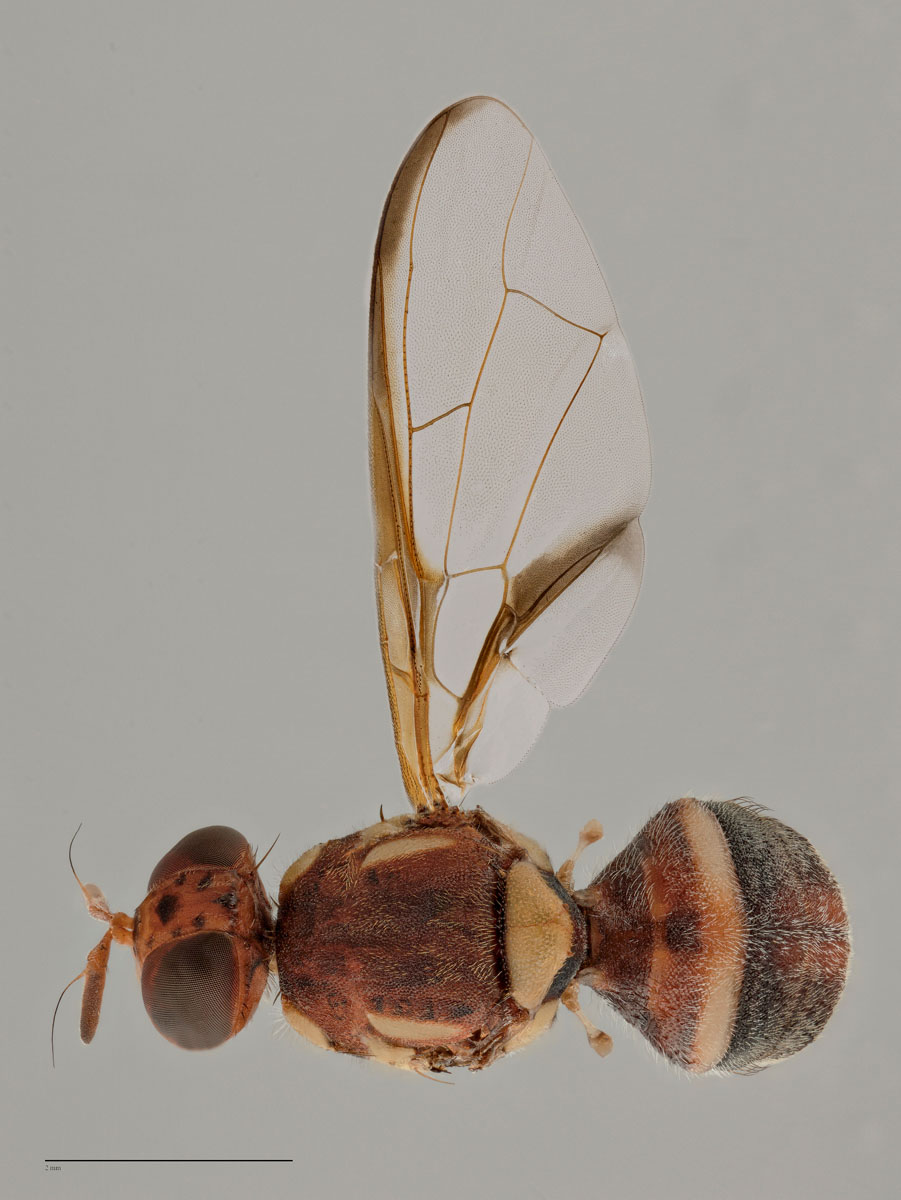 link
link Bactrocera tryoni - Entire Fly Dorsal with wing Classic TRY004
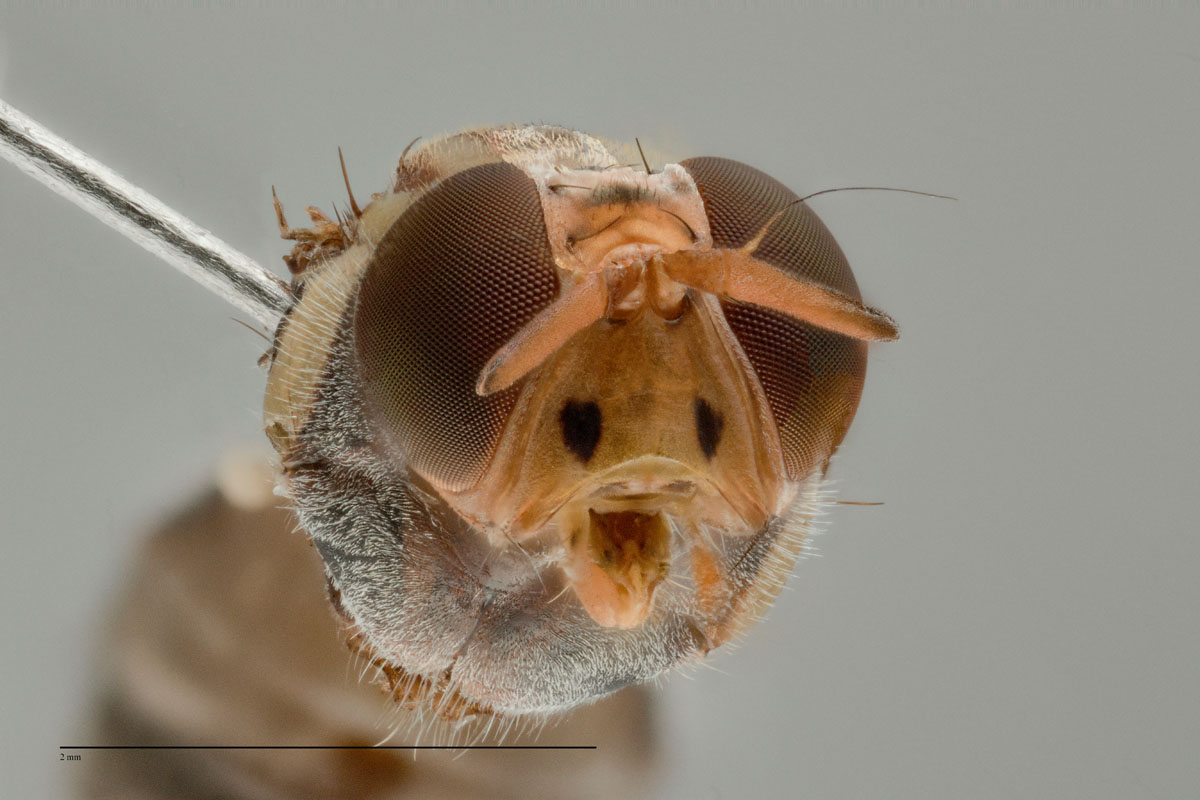 link
link Bactrocera tryoni- Head Classic TRY004
 link
link Bactrocera tryoni - Lateral Body Classic TRY004
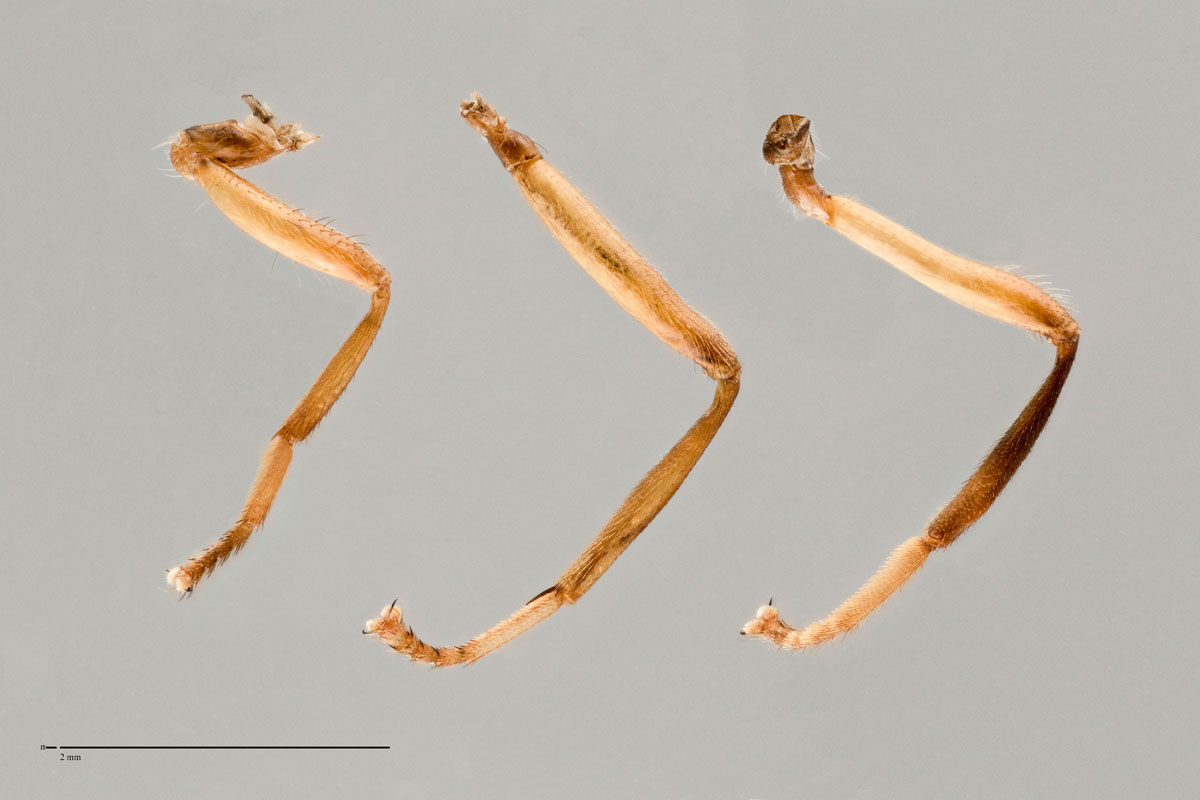 link
link Bactrocera tryoni- Legs Classic TRY004
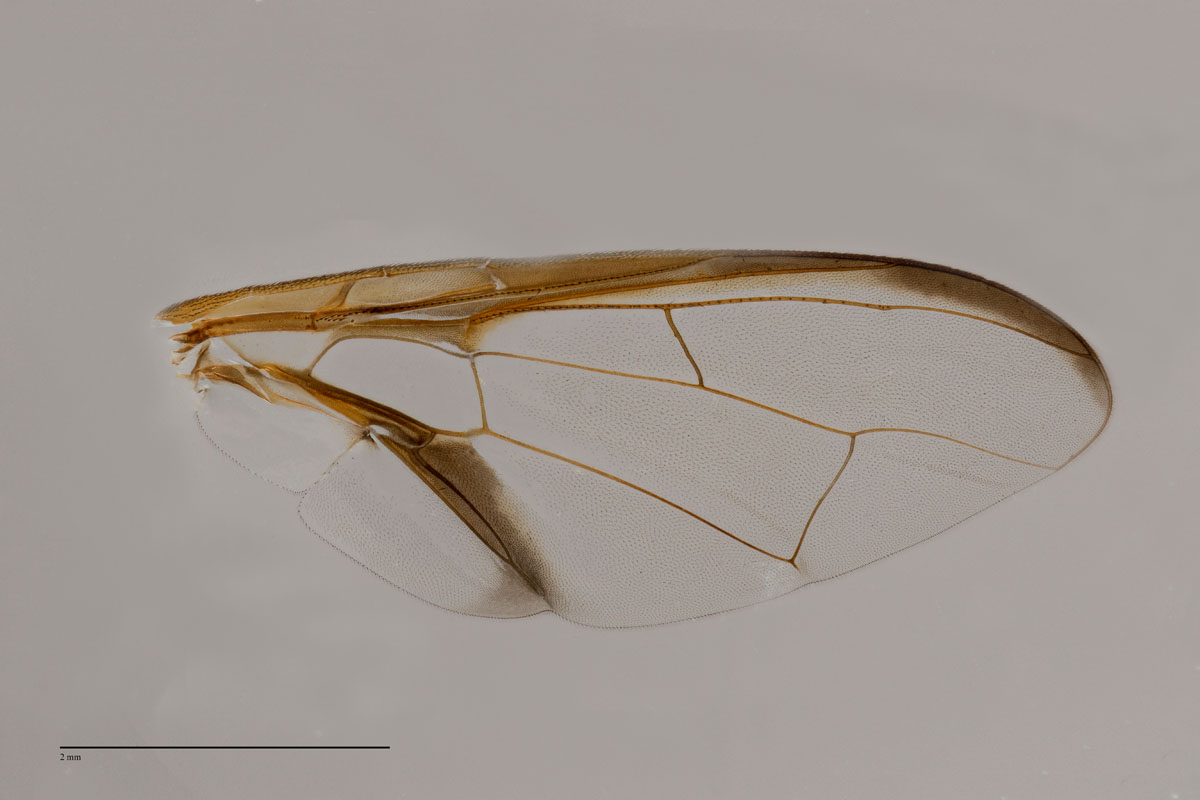 link
link Bactrocera tryoni - Right Wing Classic TRY004
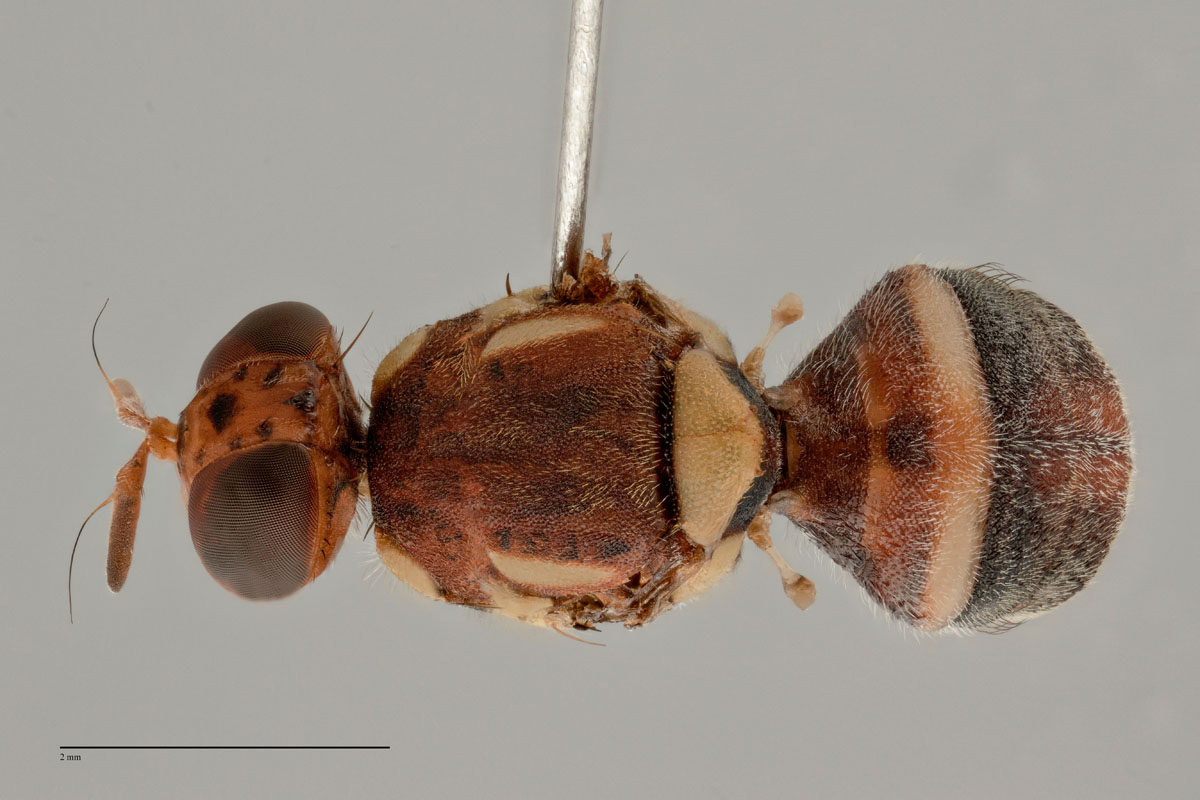 link
link Bactrocera tryoni- Scutum Pattern Classic TRY004
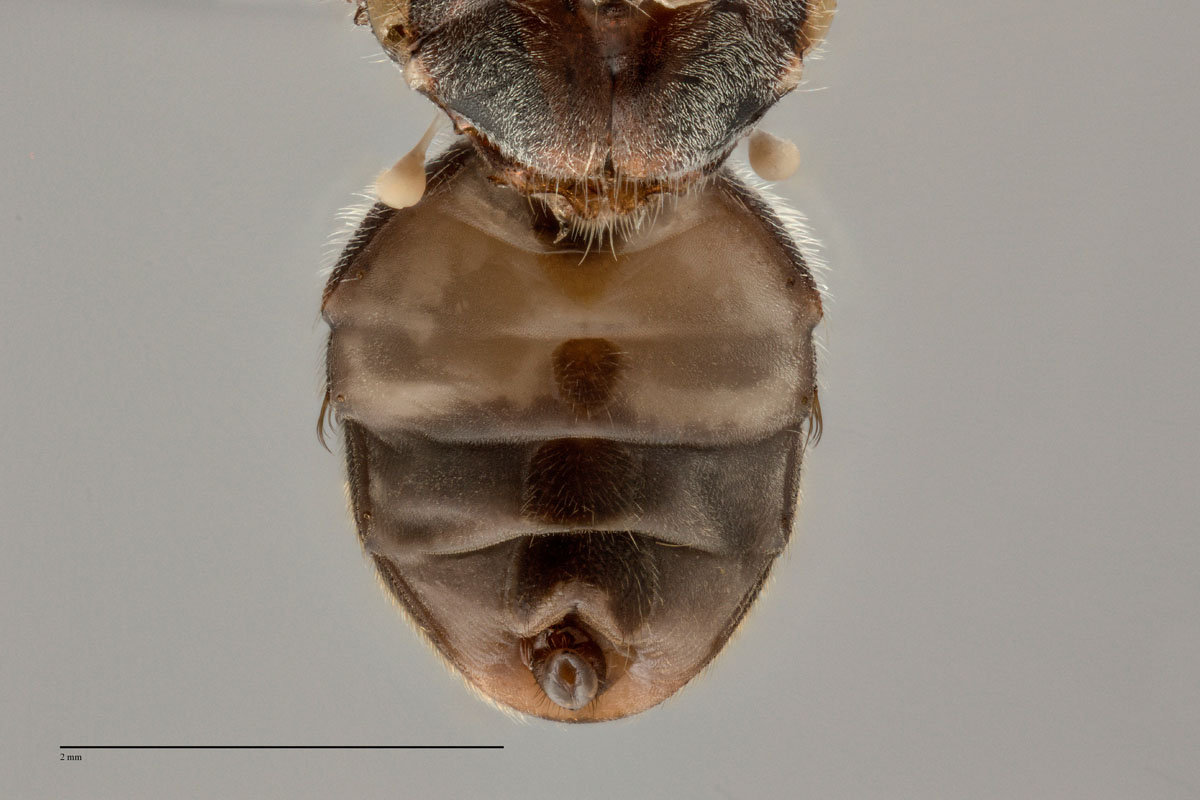 link
link Bactrocera tryoni - Ventral Abdomen Classic TRY004
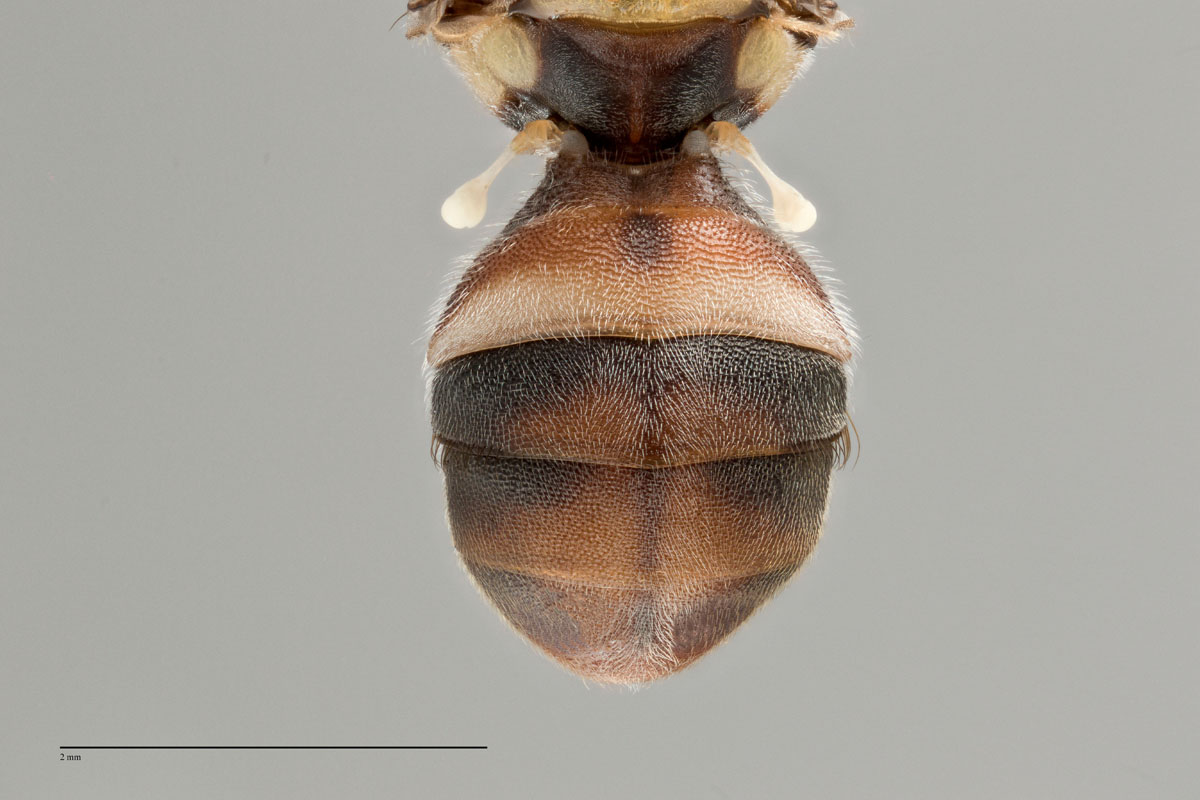 link
link Bactrocera tryoni - Abdomen Variation TRY008
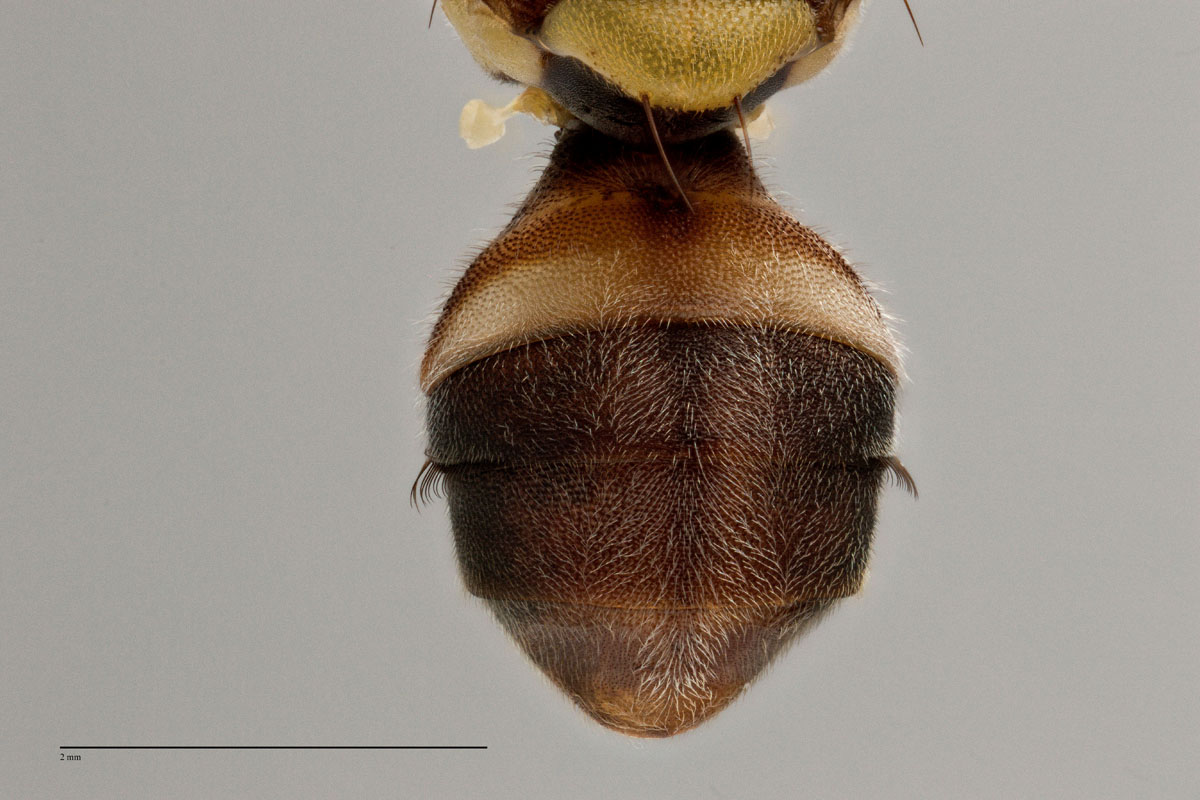 link
link Bactrocera tryoni - Abdomen Variation TRY3
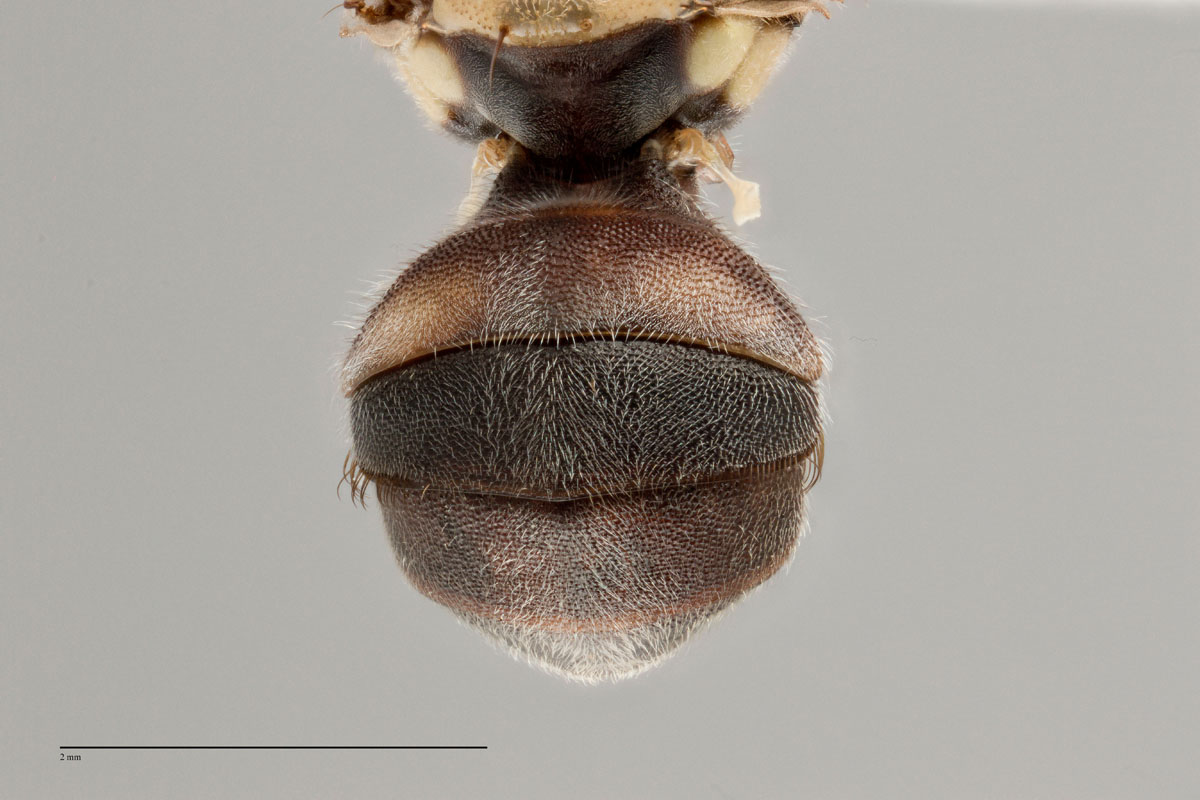 link
link Bactrocera tryoni - Abdomen Variation TRY005
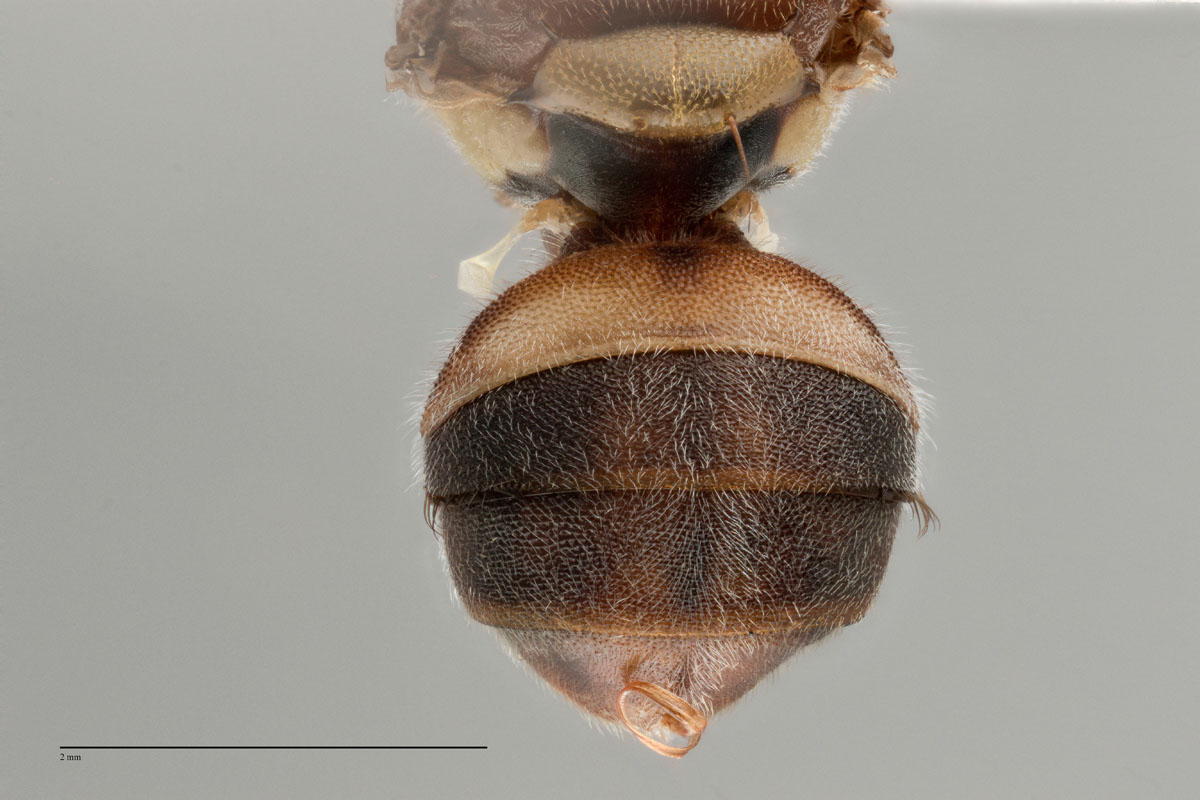 link
link Bactrocera tryoni - Abdomen Variation TRY006
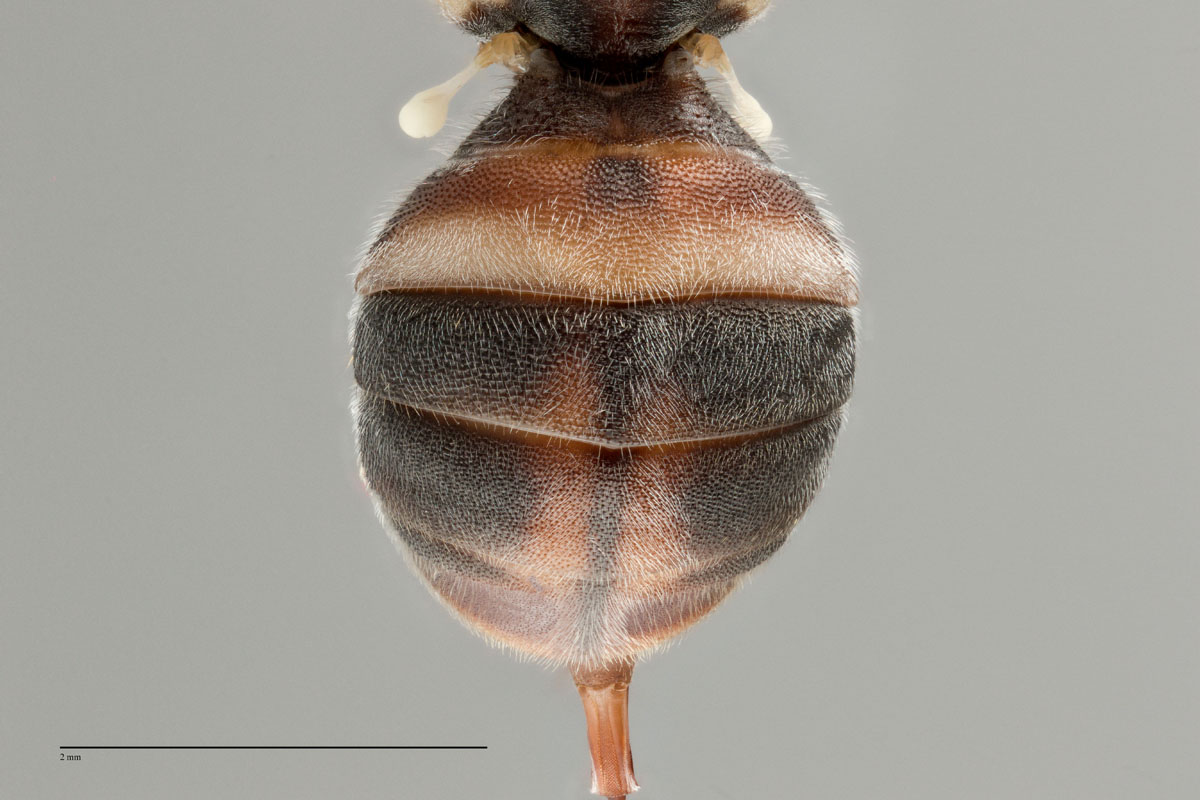 link
link Bactrocera tryoni -Abdomen Variation TRY007
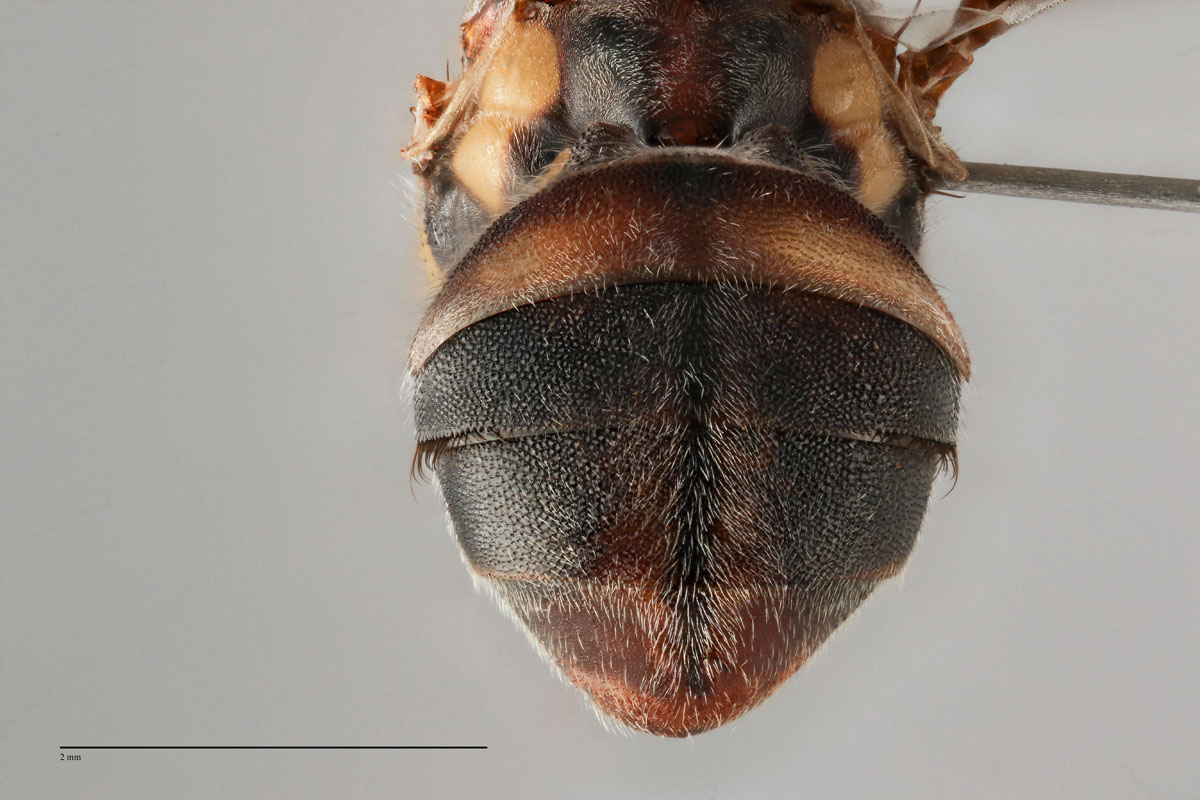 link
link Bactrocera tryoni -Abdomen Variation NSW TRY013
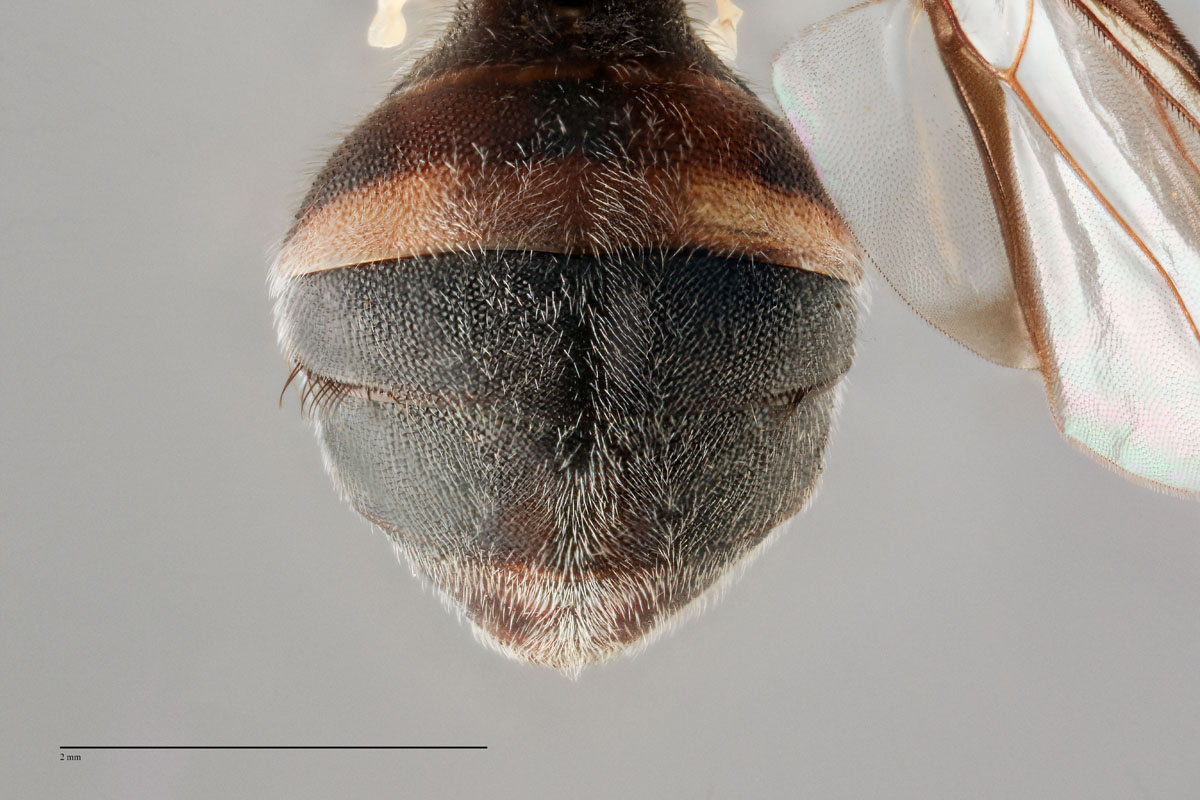 link
link Bactrocera tryoni - Abdomen Variation NSW TRY012
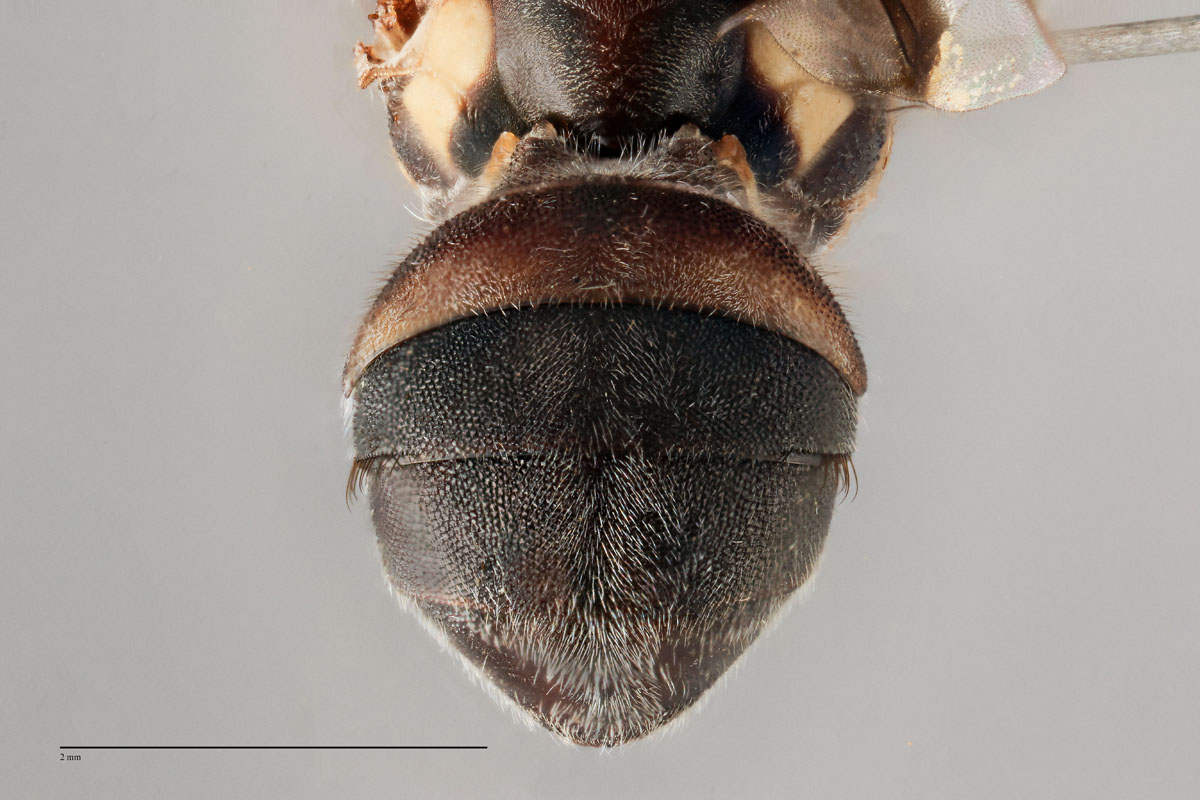 link
link Bactrocera tryoni - Abdomen Variation NSW TRY010
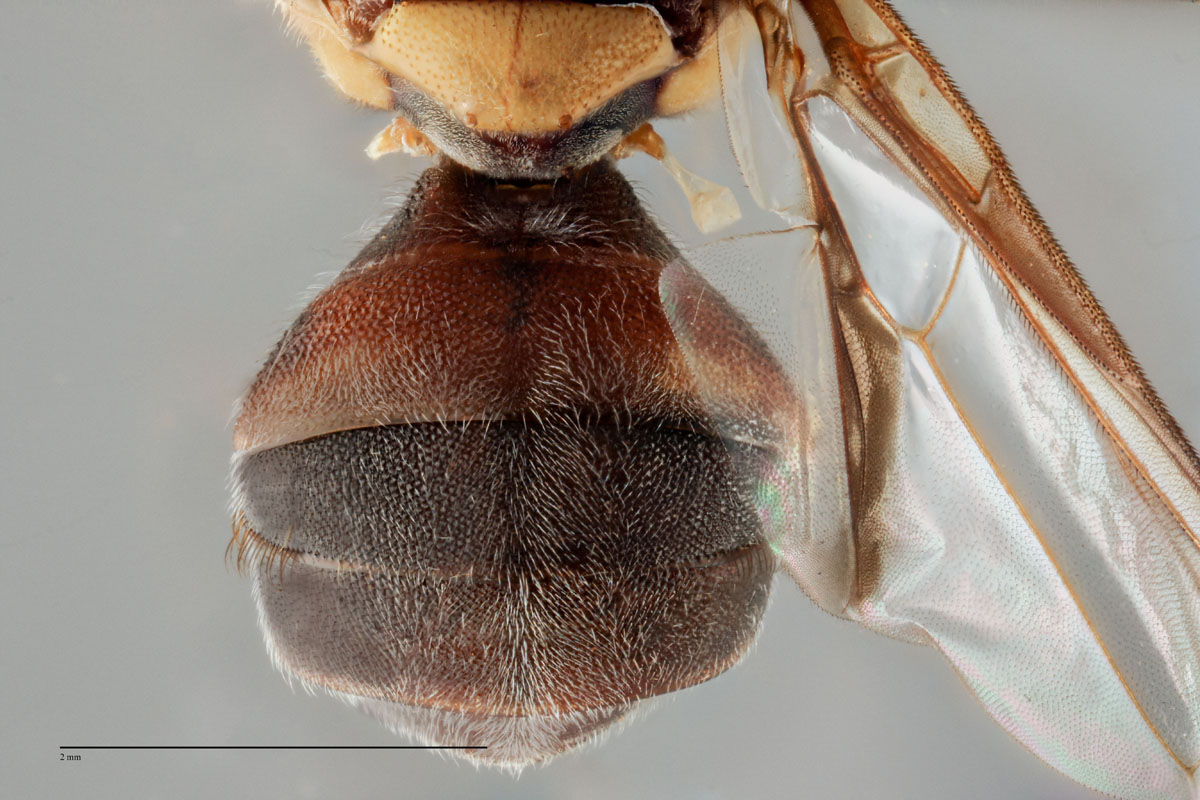 link
link Bactrocera tryoni - Abdomen Variation NSW TRY011
Host Range
Bactrocera tryoni has been recorded from over 200 hosts in 49 families.
These include: Anacardiaceae, Annonaceae, Apocynaceae, Arecaceae, Cactaceae, Capparaceae, Caricaceae, Celastraceae, Clusiaceae, Combretaceae, Curcurbitaceae, Cunoniaceae, Davidsoniaceae, Ebenaceae, Elaeocarpaceae, Ericaceae, Euphorbiaceae, Fabaceae, Flacourtiaceae, Goodeniaceae, Hippocraterceae, Juglandaceae, Lauraceae, Lecythidaceae, Loganiaceae, Malpighiaceae, Melastomataceae, Meliaceae, Moraceae, Musaceae, Myrtaceae, Oleaceae, Oxalidaceae, Passifloraceae, Punicaceae, Rhamnaceae, Rosaceae, Rubiaceae, Rutaceae, Santalaceae, Sapindaceae, Sapotaceae, Smilacaceae, Solanaceae, Thymeliaceae, Tiliaceae, Verbenaceae, Vitaceae (for a full list of recorded hosts see Hancock et al. 2000; Leblanc et al. 2012).
- Anacardium occidentale (cashew)
- Annona atemoya (atemoya)
- Annona glabra (pond apple)
- Annona muricata (soursop)
- Annona reticula (bullock’s heart)
- Averrhoa carambola (carambola)
- Capsicum annuum (capsicum)
- Capsicum annuum (chilli)
- Carica papaya (papaya)
- Casimiroa edulis (white sapote)
- Chryosphyllum cainito (star apple)
- Coffea arabica (coffee)
- Eugenia uniflora (Brazilian cherry)
- Eriobotrya japonica (loquat)
- Fortunella japonica (kumquat)
- Malus sylvestris (apple)
- Mangifera indica (mango)
- Manikara zapota (sapodilla)
- Morus nigra (mulberry)
- Passiflora edulis (passionfruit)
- Passiflora suberosa (corky passionfruit)
- Prunus persica (peach)
- Prunus persica var. nucipersia (nectarine)
- Psidium cattleianum (=littorale) (cherry guava)
- Psidium guajava (guava)
- Solanum lycopersicum (tomato)
- Syzgium aqueum (water apple)
- Syzygium forte ssp. forte (white apple)
- Syzygium jambos (wax jambu)
- Syzygium malacense (Malay apple)
- Syzygium suborbiculare (red bush apple)
- Syzygium tierneyanum (river cherry)
Distribution
Occurs in throughout eastern Australia from Northern Territory, Torres Strait Islands, Queensland south to Victoria (Hancock et al. 2000; Royer and Hancock 2012). It is also invaded and established in New Caledonia, French Polynesia and Pitcairn Islands in the South Pacific (Leblanc et al. 2012). It invaded but was eradicated from Easter Island (Drew et al. 1982). Despite three specimens being recorded from Papua New Guinea, it is most doubtful that this species is established there (Drew 1989). It was not recovered from Cue-lure trapping in 2012-2013 on mainland PNG and East New Britain (Royer et al. 2018).
Bactrocera tryoni was accidentally introduced into New Caledonia around 1969 and detected in French Polynesia in 1970. It has become a dominant pest in both places.
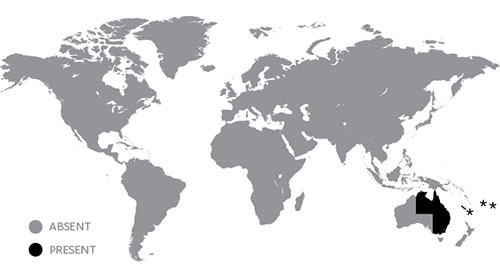
Similar species
Bactrocera tryoni is in the B. tryoni complex. It is similar to B. aquilonis but is overall red-brown instead of golden and has more of a wraparound T on the abdomen (instead of minimal markings). Bactrocera tryoni and B. aquilonis species can also be separated on the differences on the ovipositors: apex of aculeus rounded and spicules with 7-10 uniform dentations in B. tryoni compared with the more pointed aculeus and uneven dentations in B. aquilonis (Drew 1989). However, these differences are not easily observed (Cameron et al. 2010).
It is similar to B. neohumeralis but has pale postpronotal lobes and is overall red- brown (instead of dark brown). It is similar to B. melas, which has overall colouring similar to B. neohumeralis. However, it is likely than B. melas is just a melanic form of B. tryoni (Drew et al. 1982)
In north Queensland cue traps B. tryoni can also appear similar to B. breviaculeus and B. kraussi. It differs from both species in having tapered slightly shorter vittae and microtrichia in both costal cells. Bactrocera kraussi also has a broad basal band on the scutellum, narrow mesopleural stripe and dark apices of the femora.
Pest Status
- Native
- Bactrocera tryoni is a significant fruit fly pest species in eastern Australia and is the target of major control and quarantine programmes
Attractant/Lure
Cue lure. Melolure (raspberry ketone formate) was found to be one and a half times more attractive to B. tryoni in north Queensland
(Royer 2015) but trapped similar numbers as cue lure in Sydney (Dominiak et al. 2015).
